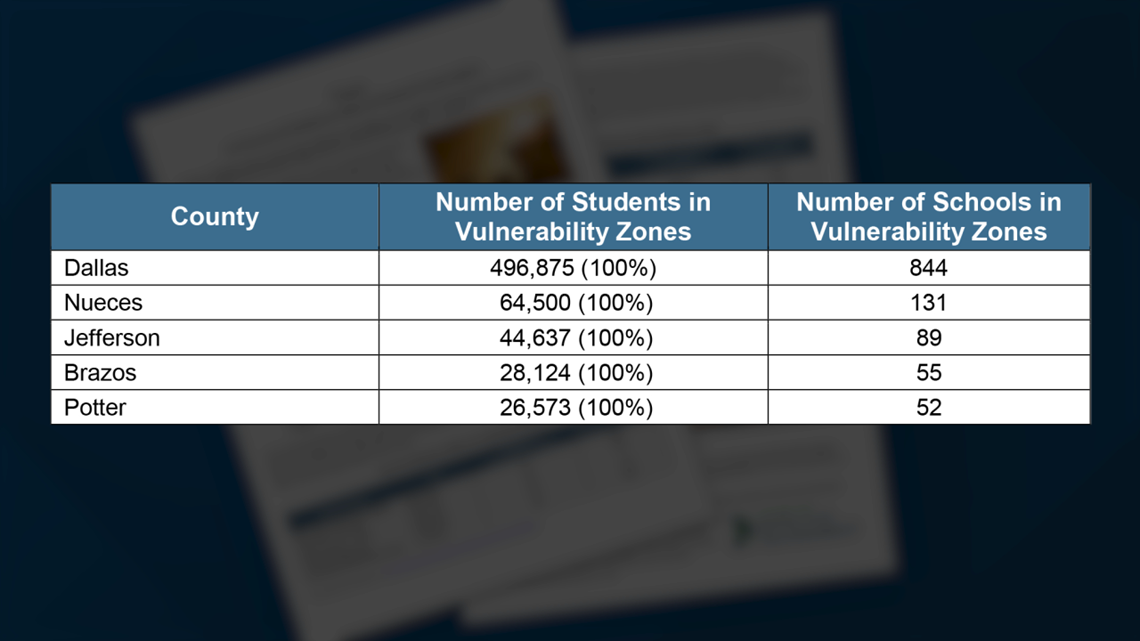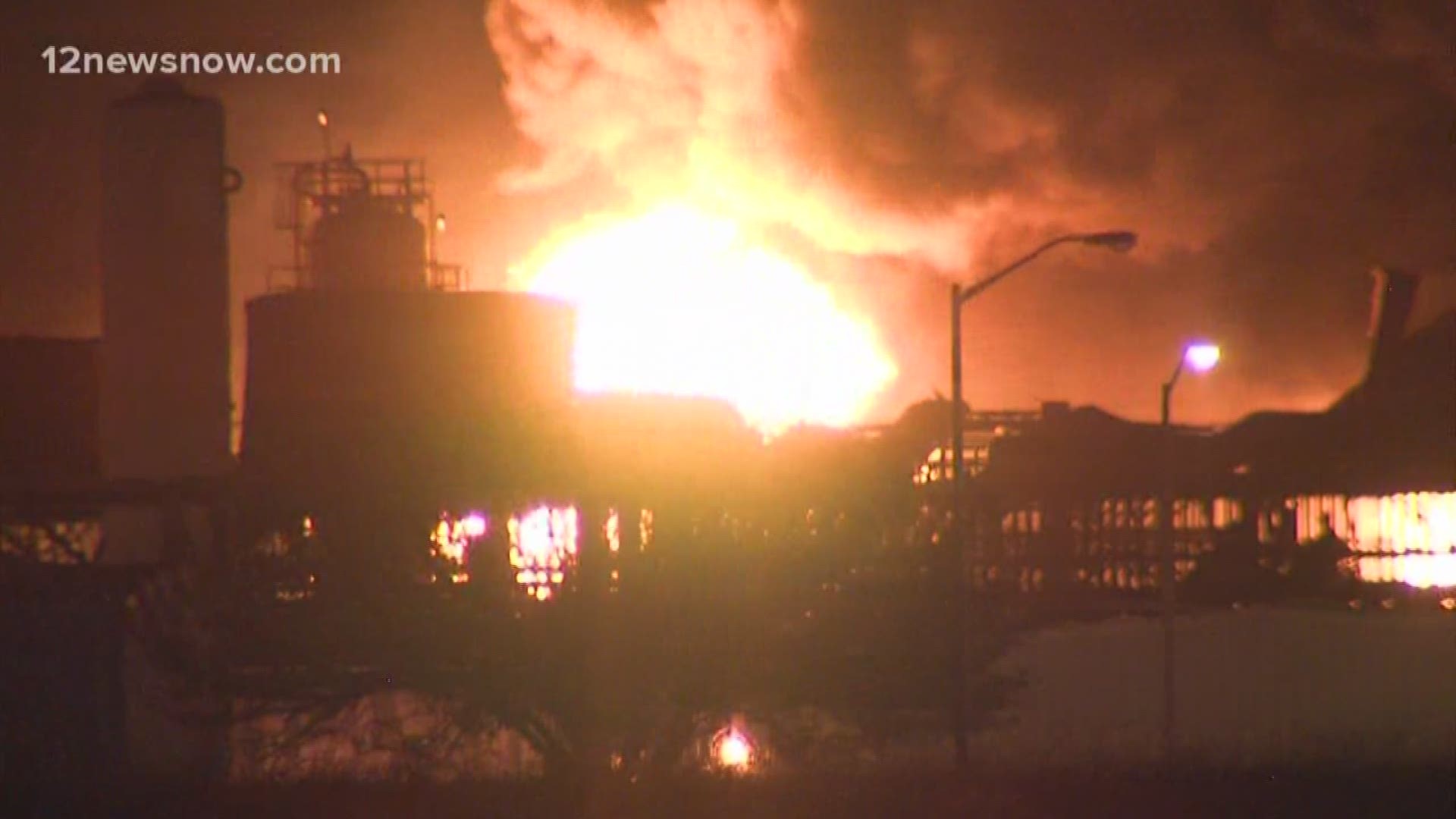PORT NECHES, Texas — Three months after the TPC group explosion in Port Neches some residents still worry about more explosions and wonder what would have happened if the explosion was 12 hours earlier while schools were in session.
Even though an explosion the magnitude of the one at the TPC plant is rare its proximity to several schools showed just how vulnerable classrooms near industry can be.
Residents were rocked from a sound sleep just before 1 a.m. on November 27, 2019, by the explosion that blew out windows and front doors in nearby neighborhoods.
Security and doorbell cameras all over town captured the huge fireball that lit up the early-morning sky in Port Neches.
The explosion followed by a fire that burned for hours along with a second explosion that afternoon sent chills down the spines of residents across Mid-County.
"I'm scared to death that thing is going to explode one more time," said Terri Gunter, a Port Neches resident.
Students were on Thanksgiving break when the TPC plant exploded leaving many residents wondering how much worse the situation could have been had the explosion happened the previous day while hundreds of students where in nearby classrooms.
"I don't even want to think about what might have happened," said Mike Beaty who has a grandson attending Port Neches Middle School.
The school, which is just over half a mile west of the explosion site, is one of three campuses damaged by the blast.
The elementary school sits just west of the middle school and Port Neches Groves High School is just over a half mile to the northwest of the TPC Group plant.
The damage to homes and properties is just a reminder of how close we live, work and learn near refineries across Southeast Texas according to Beaty.
RELATED: 'I don't wanna be here anymore' | TPC explosions spark frustration in Port Neches neighborhoods
"The plants are the lifeblood of this place. If they go away the town goes away," noted Beaty.
Three in five students, from pre-school to high school, in Texas are at risk of facing chemical leaks, gas clouds or explosions according to the Center for Effective Government's Kids in Danger Zones Report.
MORE | Find info on your town here
Southeast Texas, located in what the report refers to as a 'Multiple Vulnerability Zone,' is one of the most high-risk metro areas in the country according to the report.
MORE | Read the full report here
Jefferson County is third on the report's list of Texas counties with the most schools at risk.


In Jefferson County, there are 89 schools within what the report describes as a “vulnerability zone.”
Lamar University is less than a mile south of the ExxonMobil Refinery and several other petrochemical plants.
The university has specific guidelines in place to make sure its more than 15,000 students and staff are safe in the event of a blast, according to Shelly Vitanza, director of public affairs at the school.
"Everything on campus is designed by licensed state licensed architects and engineers. So, we take into account what the building is going to be used for and where it's located," explained Vitanza.
A lot of research has been put into making schools near petrochemical plants safer.
Experts have researched everything from domes to barriers, but nothing has proven to be realistic.
"There is no such thing as a blast proof barrier," said Sina Nejad, a structural engineer at Sigma Engineers.
Sigma Engineers specializes in designing buildings and structures for industry including blast-resistant designs
RELATED: Lawsuit alleges history of TPC Group operator error, equipment malfunctions, air quality violations
"There are no codes that I know of that dictate a different type of construction because of proximity to industry. The way you do this design is to make sure the structure would resist the load and take that energy and dissipate it as quickly as possible," said Nejad.
There are certain materials, such as structural steel, concrete, kevlar and carbon fibers that can be used to lessen the blow of a potential blast according to Nejad.
Structural steel and concrete are the best ones he says.
There are other ways to make children safer without shutting down plants or refineries according to the Kids in Danger Zones Report.
The most effective way is to require companies to use safer chemical alternatives the report says.
Some plants are already doing just that.
Facilities should also reduce the amount of toxins stored on their sites according to the report.


